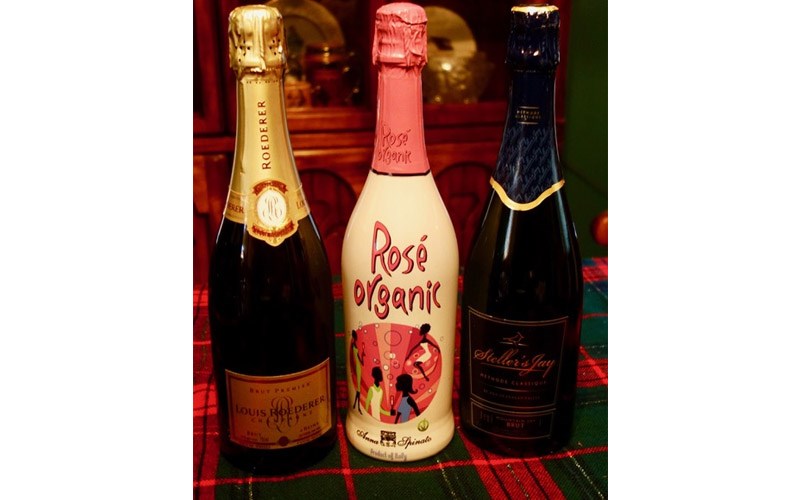As 2018 draws to a close, it’s time to celebrate our blessings and look forward to what’s ahead for us in the New Year. One traditional way to celebrate on New Year’s Eve is to pour some sparkling wine.
Our wine stores have a good array of sparklers to choose from. They come from all over the world. The German’s call theirs Sekt; the Italians, Prosecco; the Spanish, Cava, but none are as refined or as complex as French Champagne.
Champagne is a sparkling wine, but not all sparkling wines are Champagne. Actually very few are. To be labeled Champagne, it can only come from the Champagne region northeast of Paris. The limestone soil and the cold climate are the two natural factors that contribute to Champagne’s elegance.
The only grapes that can produce this nectar of the gods are pinot noir, pinot meunier and chardonnay, either in a blend or by themselves. And the method is a time-consuming labour-intensive and therefore expensive procedure. The still wine gets an extra measure of sugar, which causes a secondary fermentation in the sealed bottle. And voila, you have tiny bubbles produced under pressure waiting to be released when the cork is popped.
Most Champagne is non-vintage (NV) where wines from different vintages are blended together to keep the brand consistent from year to year. In exceptional years, the Champagne House will produce vintage champagne with the vintage year on the label. These bubblies are more complex than their non-vintage cousins and as a result, are more expensive.
If the Champagne is produced only from white grapes (chardonnay), it is labeled Blanc de Blanc (white from white). If it is produced only from red (black) grapes, you’ll see Blanc de Noir (white from black) which is a rosé or pink Champagne.
And the label can also tell you the dosage, or how dry or sweet the wine is. Brut is the driest and most common Champagne with a dosage of 12 g of sugar per L. 95 % of Champagnes are brut. Extra Sec has a dosage between 12g and 17 g per L and is slightly sweet, although the word sec means dry! Sec has noticeable sweetness with a dosage of sugar between 17 g and 32 g. Demi-Sec is even sweeter with a dosage of 32 g to 50 g. Doux is the sweetest Champagne, a dessert wine, with a dosage over 50 g. Bear in mind these sweet categories are only 5 % of what is produced so they are very rare.
The premium Champagnes are the likes of Dom Perignon 2009 ($229.99), Krug Vintage 2004 ($355.99) and Roederer Cristal Brut 2009 ($284.99). I enjoy the regular brands: Louis Roederer Brut Premier ($67.99) and Moet & Chandon Brut Imperial ($67.99).
Here in B.C. two pioneers in the sparkling wine department, Sumac Ridge’s Steller’s Jay Brut ($26.99) and Summerhill’s Cipe’s Brut ($27.99) are still favourites.
From Italy, there are proseccos galore and they’re hugely popular. At a recent wine luncheon, I discovered a new one, which is affordable and tasty: Anna Spinato Prosecco Brut ($16.99 on sale). Also from that winery is an organic Italian rosé bubbly that is budget priced, dry, fruity and delicious: Anna Spinato Rosé Organic Brut ($14.99 on sale).
When you are ready to toast the New Year and clink your glasses, it’s better to clink bell to bell rather than rim to rim. You’ll reduce the chance of breaking the glass and spilling the delicious bubbly. Cheers to the old year and bring in the new!
Eric Hanson is a Richmond wine journalist



